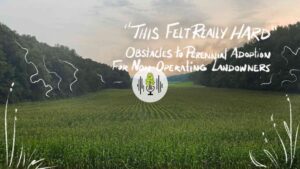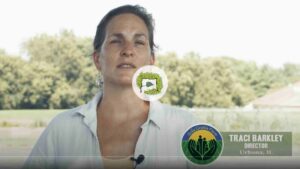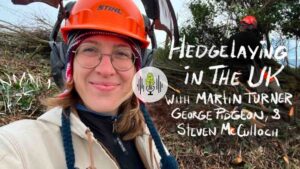Persimmons: Folklore, Fruit Exploring, and Genetics – with Eliza Greenman
The American persimmon has been a beloved food in North America for thousands of years. Yet these days, the fruit’s use has almost entirely been reduced to one waning culinary tradition: persimmon pudding.
Using this dish as a guide, Savanna Institute germplasm specialist Eliza Greenman began an investigation into persimmon genetics, which led her on an unlikely path involving regional folklore, box turtles, and newly affordable genetic tools. We hope to connect Indigenous selection of perennials with developments from our Tree Crop Improvement Program to return persimmons to a prominent place in American agroforestry.
Transcript has been edited for brevity and clarity:
Eliza Greenman: So there’s persimmon pudding pulp being sold throughout Indiana, for example, and online. From Indiana, there’s pulp being sold for persimmon pudding. So I started to think, okay, well, where there’s persimmon pudding culture in Indiana in Illinois, that’s basically the epicenter of the 90 chromosome persimmon. And so where else can we look? If we look at other places in the United States with persimmon pudding in their culture, will that show us where the 90 chromosome persimmon was taken by indigenous people?
Now why do we care about this? Why do we care about tracking the pathway of northern persimmon through southern persimmon territories in the south? And the answer to that is. There’s been very few persimmon breeders in the United States. A lot of cultivars that are still grafted today and used for these breeding programs were wild selections. And so the thought here is, when you’re working with a fruit that is essentially novel and hardly domesticated, it’s really important to start carrying with you the idea of paying some sort of attribution and giving a lot of credit to those that came before us that worked with these fruits. So this persimmon, which was selected in southern Illinois, you know, the last selection was made by indigenous people.
Links
Mitchell Persimmon Festival: persimmonfestival.org
Grassland 2.0: grasslandag.org
Canopy: canopyfm.com
Listen to Recent Episodes

“This Felt Really Hard” – Obstacles to Perennial Adoption for Non-Operating Landowners
Host Jacob Grace talks with his friend Alex about her family’s experiences as non-operating landowners trying to establish perennial management on their historic Wisconsin farm, and the hurdles and roadblocks they have encountered along the way.

Agroforestry for Community Food Security
Sola Gratia in Urbana, Illinois grows food for a community where one in 10 people and one in eight kids don’t know where their next meal is coming from.

Hedgelaying in the UK with Martin Turner, George Pidgeon, and Steven McCulloch
This January, Savanna Institute staff member MJ Oviatt visited the UK to study hedgelaying with members of the Blackdown Hills Hedge Association. In this episode, we hear MJ’s recorded conversations with hedgelayers Martin Turner, George Pidgeon, and Steven McCulloch.

